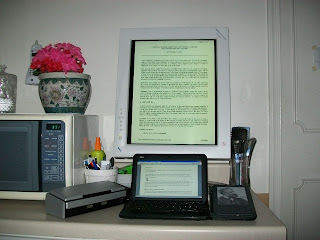
There are days when stuff piles up.
In past, stuff on the table would get swept off into grocery bags and stashed, usually in preparation for guests. We weren't like artist Andy Warhol, who swept the ephemera of his life into 610 boxes as an artistic gesture.
No. We just didn't want to deal with our stuff. [Doesn't that sound like a statement one might make about an entire generation or country, and how that large group has dealt with the world?]
Anyway, I had a friend who had once worked as a professional organizer. She used to work for Don Aslett, author of Clutter's Last Stand.
My friend taught me the triage technique they would use to sort through stuff.
1) Separate the items on the table into three piles: keepers, trash, and "Don't know."
2) Throw away the trash. Put away the keepers.
3) Sort the "Don't know" pile into three piles: keepers, trash, and "Don't know."
4) Throw away the trash. Put away the keepers.
5) Sort the "Don't know" pile into two piles: keepers, trash.
6) Throw away the trash. Put away the keepers.
That was it.
You may modify as you wish to add recycle and/or donate boxes to contain those items you want to move out "responsibly," but the basic method is the same.
Here's my table part way through triage: A bin of my stuff to be put away, a jar of pens and stuff to be put away, a pile of papers to go through (scanner on and recycle/shred bins handy), and a small pile of my husband's game-related items he needs for an ongoing auction.
All we need to do is invite some guests over, to make sure we finish the process...












